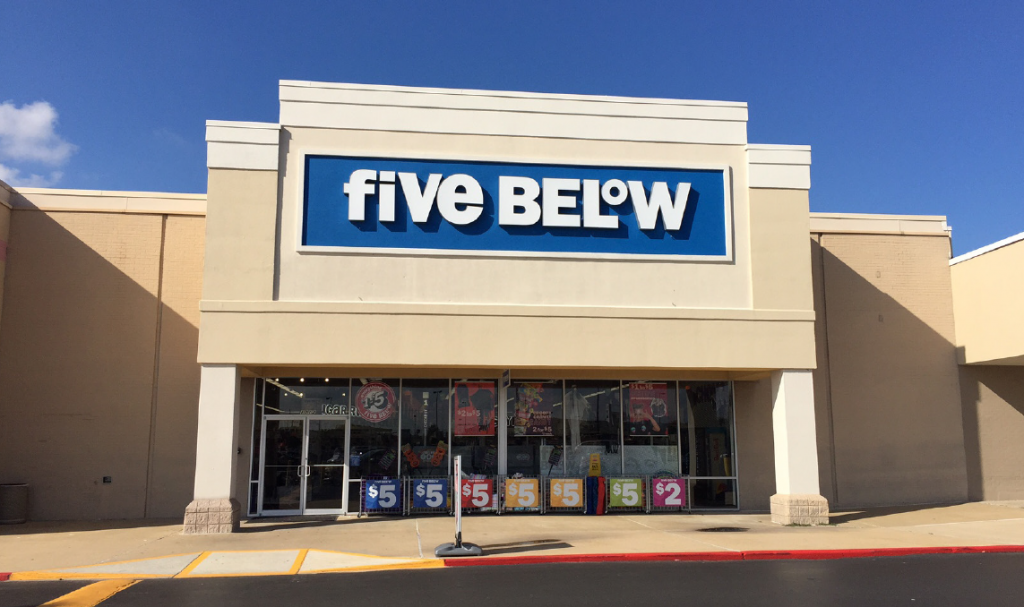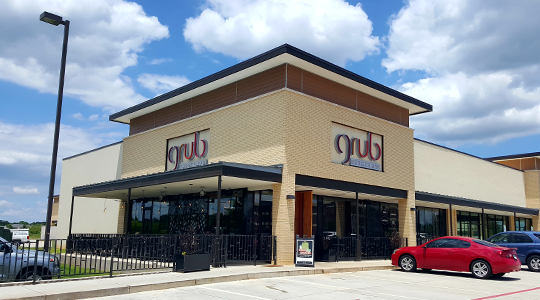Retail Market Survey: Shreveport-Bossier City, LA
Stirling Properties releases its Shreveport-Bossier City Retail Market Survey for mid-year 2018.
According to the assessment—compiled by Stacy Odom and Karen McElroy, Broker Associates with Stirling Properties—the Shreveport–Bossier City retail sector is currently in the midst of a recovery phase. After experiencing a period of increased retail vacancy, the area is seeing the entry of new discount retailers, new-to-market retailers and food concepts, as well as multi-store operators gobbling up available inventory of second-generation space. Without notable new development in the market, this aids in decreasing vacancy rates, particularly among neighborhood shopping centers.
The retail market survey identified a total of fifty-seven (57) multi-tenant retail centers with a minimum of twenty thousand (20,000) square feet in Shreveport-Bossier City with 90% total occupancy as of mid-year 2018.
Looking to the future, the emergence of healthcare facilities in retail settings and the potential for mixed-use redevelopment projects backfilling big-box stores are both noteworthy national trends expected to influence the Shreveport-Bossier City market, possibly having an additional impact on retail space moving forward.
Click here to view and download the complete Shreveport-Bossier City Retail Market Survey.
This report is intended to give the reader a broad understanding of the market as well as specific information about the available square footage, occupancy and rental rates of each retail center greater than twenty thousand (20,000) square feet. It was created to be a resource for agents as well as tenants, landlords, developers, lenders, fellow brokers and anyone else looking for information about the Shreveport-Bossier City retail market.
Consumers Still ♥ Brick-and-Mortar
Valentine’s Day has come and gone—and it was retailers who were feeling the love this year. According to the National Retail Federation (NRF), early sales projections leading into the holiday were estimated to reach a near record of $19.6 billion, an increase from $18.2 billion last year. U.S. consumers individually were expected to spend an average of $144 on Valentine’s Day, also up from last year’s $136.57. The NRF reports these retail numbers are the second-highest in its survey’s 15-year history. Additionally, the majority of Valentine’s Day retail sales were expected to be made in a physical store, including department stores, discount stores, specialty stores, florists, or local small businesses.
This healthy holiday spending is reflective of the upwards trend across the U.S. over the past year. The 2017 official Holiday Season (November & December) rounded out with total retail sales estimated to be more than $690 billion, a whopping 5.5% aggregate increase over 2016, indicating the strongest holiday season growth rates since 2010. Shoppers spent an average of $842 on gifts and holiday-related items versus $714 in 2016. Furthermore, 85% of total sales were by retailers with a physical presence.
These statistics confirm and reiterate that the retail real estate industry is thriving, and the rise of ecommerce hasn’t changed that. Yes, we’ve read the bloated headlines about “the retail apocalypse,” “the death of shopping centers,” and “the Amazon effect on retail” but the real story is that ecommerce sales account for less than 12% of total retail sales. It is also estimated that over half of those online sales actually go to brick-and-mortar retailers. Even though ecommerce sales are growing considerably, online giants such as Amazon still only account for a small percentage of the overall market.
As we saw this past Valentine’s Day and during the 2017 Holiday Season, consumers prefer to shop in-store. In fact, 90% of holiday shoppers made purchases from retailers with a physical presence. In the retail game, successful stores are actually using ecommerce to their benefit, giving consumers more options and convenience to make their purchases. Omnichannel buying options, like click-and-collect and click-and-ship, are enhancing the brick-and-mortar shopping experience and boosting sales at physical stores.
To add even more sentiment to your post-Valentine’s Day heart: In the past year, we saw more retail store openings than closures and store openings are expected to outpace closures over the next 5 years (according to Zebra Technologies-IHL Group study). In 2017, the retail market had 4,080 net store openings.
And… To put the icing on the heart-shaped cupcake, retail sales are expected to continue to increase for the next several years. Many experts forecast that overall retail sales will rise between 3.8% and 4.4% in 2018 over last year. That certainly warms my heart.
On track with the rest of county, the retail landscape here in the Gulf South region is solid. Occupancy rates in our centers remain high. Retailers are reporting strong foot traffic and higher-than-anticipated sales numbers—especially those who are learning to adapt to consumer demands and offering unique shopping experiences. We are also attracting and welcoming many new-to-market stores and restaurants.
So, on Valentine’s Day, today, and every day, let’s remember to advocate for and show a little love to our brick-and-mortar retail friends.
Marty Mayer
President & CEO
5 Dos and Don’ts of Reaching Generation Z
We’ve all read numerous statistics, studies, and articles regarding the infamous “Millennials.” Over the last few years, this generation has reshaped the way we do business and even how we interact and communicate with one another.
One major industry that has been significantly impacted by the Millennial generation is commercial real estate, especially the retail sector. Millennials have changed the game with consumer shopping habits and buying preferences—retail real estate is still trying to catch up.
But now, we are seeing the emergence of the new kids on the block: Generation Z. And if preliminary studies are accurate, they too are altering the rules of retail. Here’s a little insight shared by one of Stirling Properties’ summer interns, Kylie. She gives us a real-life perspective on the mindset of Generation Z:
5 Dos and Don’ts of Reaching Generation Z
Generation Z (aka Post-Millennials, iGeneration, Founders, or Plurals) refers to those born roughly between the years 1995 and 2010. They currently make up 25.9% of the United States population and account for $43-44 billion in direct spending. By the year 2020, it is estimated that they will represent one-third of the nation’s population. Though the youngest members are still in first grade, their overall impact is extensive.
Due to the closeness in years between Millennials and Generation Z, it is easy to blur the line between the two. But as anyone who owned a BlackBerry ten years ago can tell you, a lot can change within a short period of time.
One of the biggest mistakes companies could make is treating Generation Z the same as the Baby Boomers, Generation X, or even the Millennials. Each generation is affected by their environment and receptive to different things, and Gen Z is no different. It’s a new time, and new tactics are needed to reach this market.
1. Do Embrace Social Media
Gen Z has never lived in a world without the internet. It is estimated that 73% of Gen Z owns smart phones. We are comfortable with technology and use online platforms and social media for the majority of our communication. We expect to be connected to the virtual and physical world at all times. Your products must also have this dual existence. Euclid Analytics’ CEO Brent Franson says, “online is the efficiency, offline is building the experience…The king or queen of retail will master both online and offline.”
2. Don’t Make Them Wait
“I like my products the way I like my ACT results: quick.” A good friend of mine recently said this while explaining why he loves Amazon. Generation Z is used to instant gratification and impulsive decisions. We are used to having the answers immediately at our fingertips, and something just as simple as a long load time, a difficult to navigate website, or long lines will turn us away.
3. Do Get Influencers
The influencer marketing platform, MuseFind, discovered that 92% of consumers trust an influencer more than an advertisement or traditional celebrity endorsement. This is because influencers are authentic. They are everyday people using Snapchat, YouTube tutorials, or blogs that we have built relationships of trust with. We follow their stories and rely on their opinions as real people just like us. Although, as soon as the authenticity is gone or the content is poor, we will unsubscribe and move on.
4. Don’t Rely On Brands
Brand loyalty is not the same as it once was. With so much information flooding in, we are not blind lambs waiting for directions. If a brand has shoddy workmanship, the name won’t save it. The price should be reflective of the value, and if it is not up to standard, Gen Z is not afraid to switch brands. Also, keep in mind, Gen Z is big into individualism and creating our own personalized brand, we don’t want to be walking advertisements.
5. Do Be Transparent
If your company is hiding skeletons in the closet, be prepared to start cleaning. Through sites such as Yelp, transparency is more relevant today than ever. Prospective customers can learn everything from where products are made, to what a company stands for, and all of this matters to Gen Z. Kyle Andrew, the CMO of American Eagle Outfitters, says, “Gen Z seems to really care about engaging with brands that have values that align with their own…You can’t just make stuff: You have to stand for something.”
Businesses must be prepared now to change their traditional methods to appeal to this next generation, because they may not get a second chance. The online group committed to building a better world, EY, says, “Gen Z’s low threshold for mistakes and ‘system issues’ will make Millennials look like patient saints.”
As the world changed for Millennials, it must change once again. Gen Z is informed, impatient, and fast paced. And they are quickly becoming the largest generation with significant buying power. If companies don’t begin adapting now, they may never be able to catch up.
Shreveport-Bossier City Retail Market Survey 2016 3rd Edition
Stirling Properties is pleased to present the 3rd annual Shreveport-Bossier City Retail Market Survey. This report, compiled by Stacy Odom and Karen Hannigan, Broker Associates of our Shreveport office, is intended to give the reader a broad understanding of the market as well as specific information about the available square footage, occupancy and rental rates of each retail center greater than twenty thousand (20,000) square feet. It was created to be a resource for agents as well as tenants, landlords, developers, lenders, fellow brokers and anyone else looking for information about the Shreveport-Bossier City retail market.
All information provided in this report would not be possible without the cooperation of our staff and colleagues and we would like to thank all of those who contributed.
Shreveport-Bossier City Retail Market Survey 2016
Stirling Properties is pleased to present the 2nd annual Shreveport-Bossier City Retail Market Survey. This report, compiled by Stacy Odom and Karen Hannigan, Broker Associates of our Shreveport office, is intended to give the reader a broad understanding of the market as well as specific information about the available square footage, occupancy and rental rates of each retail center greater than twenty thousand (20,000) square feet. It was created to be a resource for agents as well as tenants, landlords, developers, lenders, fellow brokers and anyone else looking for information about the Shreveport-Bossier City retail market.
All information provided in this report would not be possible without the cooperation of our staff and colleagues and we would like to thank all of those who contributed.










